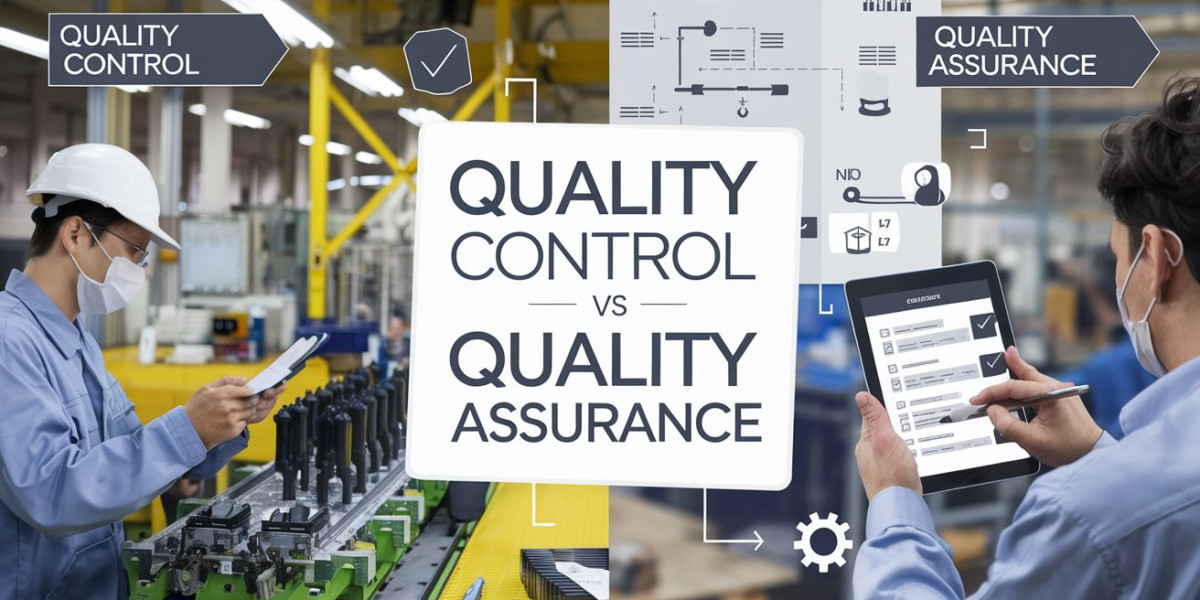In the field of quality management, two terms are frequently used: quality control (QC) and quality assurance (QA). Though they are frequently used interchangeably, they serve different purposes and are crucial to the success of any product or service. Understanding the distinctions between QC and QA enables firms to enhance their processes, satisfy customer expectations, and produce high-quality outputs.
What is Quality Control (QC)?
Quality control is a reactive procedure that seeks to uncover flaws in the finished product or service. QC guarantees that the final product satisfies the relevant criteria and standards. This includes inspecting, testing, and correcting the product to verify it meets the specified requirements.
The key goals of Quality Control include:
- Detecting defects before products reach customers
- Ensuring consistency in output
- Minimizing variations in quality
QC activities usually occur after the production process. It involves techniques like testing samples, conducting inspections, and reviewing product quality. The responsibility of QC typically falls to the production or operations team.
What Is Quality Assurance (QA)?
Quality Assurance, on the other hand, is a proactive process that focuses on preventing defects from occurring in the first place. QA ensures that proper processes, procedures, and standards are in place to minimize the likelihood of errors or defects during production.
The key goals of Quality Assurance include:
- Establishing a framework to prevent issues
- Improving production efficiency
- Ensuring compliance with industry standards
Unlike QC, QA is more process-oriented and involves activities such as auditing, training, and documentation. It is implemented throughout the entire production lifecycle and is often overseen by the quality management or compliance teams.
Key Differences Between Quality Control and Quality Assurance
Focus
- Quality Control (QC): Focuses on the end product by identifying and fixing defects.
- Quality Assurance (QA): Focuses on the process by preventing defects before they occur.
Timing
- QC: Occurs after the product is produced, during the inspection or testing phase.
- QA: Occurs before and during production, focusing on the processes that lead to the final product.
Responsibility
- QC: Typically the responsibility of the production or operations team.
- QA: Typically the responsibility of the quality management or compliance teams.
Approach
- QC: Reactive, aiming to detect and correct defects.
- QA: Proactive, aiming to prevent defects through process improvements.
Tools and Techniques
- QC: Includes inspections, testing, sampling, and statistical quality control.
- QA: Includes audits, process checklists, process standards, and quality documentation.
How QC and QA Work Together
QC and QA serve separate functions, yet they are complementary and frequently collaborate to assure high-quality goods. QA focuses on laying a solid foundation by developing proper processes, whereas QC inspects the finished product to ensure it satisfies the criteria. When both processes are implemented properly, they reduce the likelihood of problems and ensure customer satisfaction.
For example, in a software development company:
- Quality Assurance might involve creating coding standards, conducting code reviews, and ensuring compliance with software development best practices.
- Quality Control would involve testing the software for bugs, verifying functionality, and ensuring that the final product meets user requirements.
Why Both QC and QA Are Important
Customer Satisfaction:
Both QC and QA are essential for ensuring that the end product meets customer expectations. While QC detects issues in the final product, QA works to prevent those issues from occurring in the first place.Cost Efficiency:
Identifying defects early in the process through QA can save time and money compared to finding and correcting defects after production through QC.Continuous Improvement:
QA emphasizes continuous process improvement, which in turn leads to fewer defects over time. QC provides feedback on product quality, which can be used to refine processes further.Compliance and Risk Management:
QA ensures that processes comply with industry standards, regulations, and certifications, while QC ensures that the final product adheres to those standards. Together, they help manage risk and protect the organization from legal or regulatory issues.
To summarize, Quality Control and Quality Assurance have unique but equally significant functions in quality management. QC focuses on discovering problems in the finished product, whereas QA focuses on preventing defects during the manufacturing process. Both are essential for producing high-quality products, keeping customers happy, and attaining long-term business success.
Organizations may create a strong quality management system by understanding and executing both QC and QA procedures, ensuring perfection at every stage of production, from early planning to final delivery.
About Axonator Inc:
At Axonator, our vision is bold and transformative: to mobilize the world. We see a future where businesses and communities are effortlessly interconnected through the power of mobile technology. Our mission is to equip organizations globally with cutting-edge mobile solutions, unlocking new possibilities for innovation, efficiency, and seamless collaboration in every facet of their operations.
Contact:
Axonator Inc. (The World On Mobile)
Austin, TX, USA
USA: +1-716-274-8885
India: +91-8600-032-635
Email: support@axonator.com
Website: https://axonator.com/





